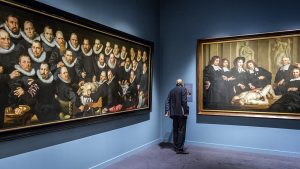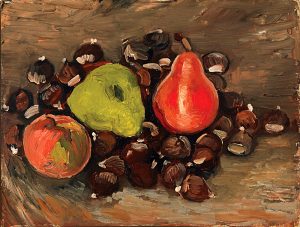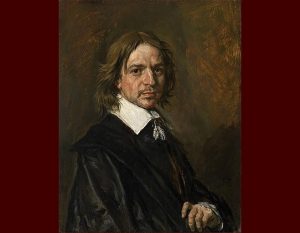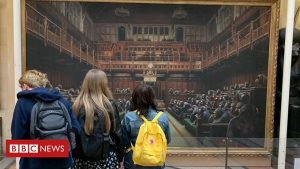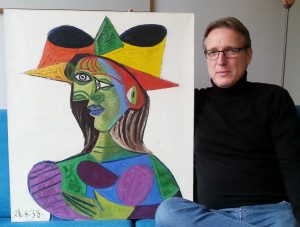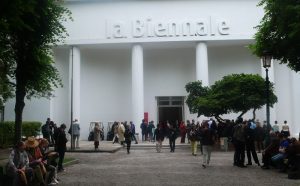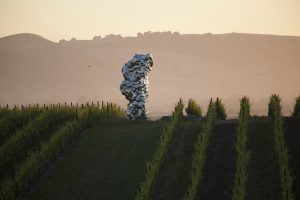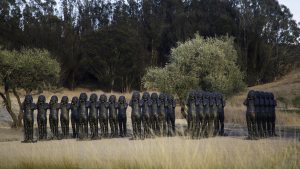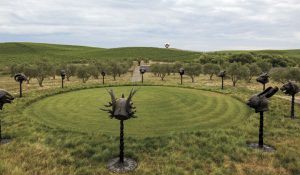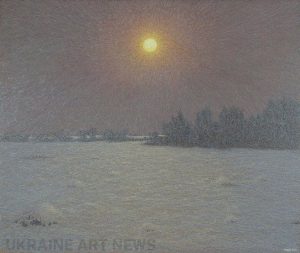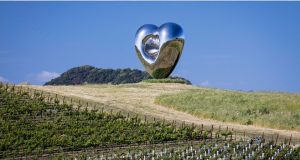02.04.2019
A little more than a year has passed since Leonardo da Vinci’s World Savior was sold at Christie’s auction in New York for a record $ 450 million, and the work was again in the spotlight.
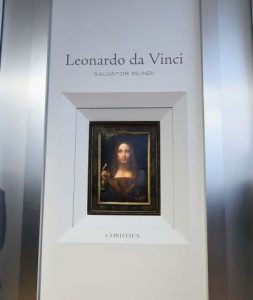 Leonardo da Vinci. “Savior of the World”
Leonardo da Vinci. “Savior of the World”
Tabloids and even respected publications came out with sensational headlines, from which it followed that the “Savior of the World” Leonardo da Vinci “disappeared”, “disappeared” or even “in the Louvre do not know where the picture is.” The reason for the mass hysteria around the work was the publication in The New York Times of March 30, dedicated to the fate of the painting after the auction. No new and especially sensational facts are given there, but the text is replete with speculation and rumors. However, one phrase that the staff of the Louvre Museum – Abu Dhabi privately admit that they do not know anything about the whereabouts of the Savior of the World, was enough to raise the hype in the press. Recall that in December 2017, the Department of Culture and Tourism of Abu Dhabi announced that it had acquired Leonardo’s work for the Louvre-Abu Dhabi Museum and will soon be replenished with her exposure, however, the picture scheduled for autumn 2018 was canceled last September without explanation and no further comments from the UAE officials. However, the owner (whether the Department of Culture and Tourism of Abu Dhabi or someone else) has the right to dispose of the work of art at its discretion and decide on where to store the picture and expose it, without reporting to the world community and the museum staff in Abu – Dabi. It would seem, who cares, whether the work is with the owner (immediately after the purchase there were suggestions that someone from the ruling dynasty of Saudites acquired it, and the Department of Culture and Tourism of Abu Dhabi was only a screen), in a cell of one of the freeport or in the restoration workshop and for what reason – for reasons of safety or security? However, as a result of Christie’s marketing campaign before the auction, the painting was dubbed “the religious version of Mona Lisa”, advertised as “the last Leonardo in private property”, and after a record sale, they added “the most expensive painting in the world” to the titles, so interest in its fate too can be understood. Apparently, it remains to wait for the fall, when the Leonardo exhibition opens in Paris – perhaps the Savior of the World can be seen in the Louvre starting in October, and where the picture will be up to this point is not so important.
Recall the main points of the article in The New York Times.
1. The author of the article, David Kirkpatrick, still calls the owner of the crown prince of Saudi Arabia, Mohammed bin Salman, and notes that it remains a mystery how Abu Dhabi could get the picture, whether it was a gift from the Saudis, a private sale or a painting on temporary exhibiting. An anonymous buyer at an auction in New York was Prince Bader bin Abdullah bin Mohammed bin Farhan al-Saud, one of the members of the royal family of Saudi Arabia. Despite all the measures taken by Christie’s to keep the buyer’s name secret, contracts and correspondence were at the disposal of The New York Times, proving that Bader had acquired the job. Later it was reported that Prince Bader acted in the interests of the Crown Prince Mohammed. A few months after the auction, the royal court-appointed Prince Bader as the first Minister of Culture of Saudi Arabia. In turn, the crown prince of Abu Dhabi Mohammed bin Zayed is a close ally of the crown prince of Saudi Arabia Mohammed.
2. The Louvre would like to get a picture of the exhibition of works by Leonardo da Vinci, timed to coincide with the 500th anniversary of the death of the artist, which opens in Paris in the autumn of 2019. However, according to an official from the French government who was familiar with negotiations with the museum in Abu Dhabi and who wished to preserve anonymity, the Louvre of Paris could not find the “Savior of the World.”
However, The Art Newspaper quotes the Louvre press secretary in an article dated February 18, 2019: “I confirm that the museum requested the Savior of the World picture from the owner for the Leonardo exhibition, which opens in October, and the museum really wants to exhibit this work, however, they have not yet received a response from the owner. ”
3. The article discusses the reasons why the Savior of the World display in the Louvre – Abu Dhabi museum could be canceled. For example, the desire of Prince Mohammed bin Salman to keep the picture for himself. Or his unwillingness to expose the work for fear that the discussion about the authenticity of the work will be resumed.
4. In addition, David Kirkpatrick for The New York Times turned to Dianne Modestini, who restored the work before Christie’s, and Oxford professor and creative artist Leonardo Martin Kemp with a question about what they know about the location of the painting. Both replied that they knew nothing. As if by the way it is mentioned that skeptics expressed doubts about the belonging of the work by Leonardo, and also expressed the opinion that she was so carefully restored by Professor Modestini, that she was as much her work as Leonardo’s. “Nonsense,” she said in an interview with The New York Times, calling it “ridiculous pretensions.”
